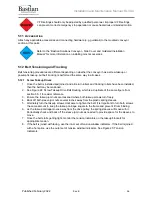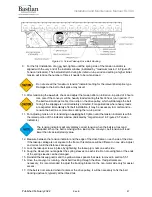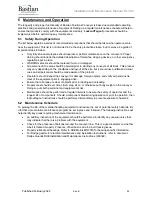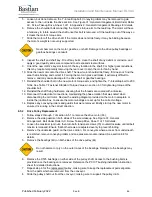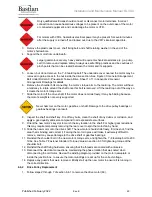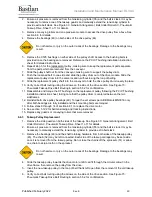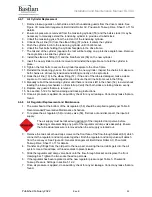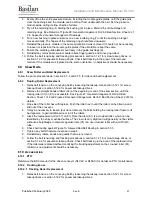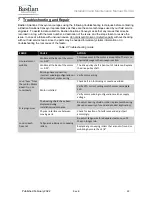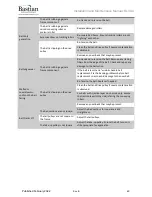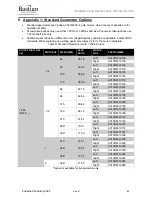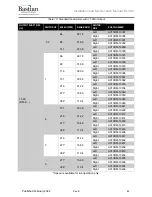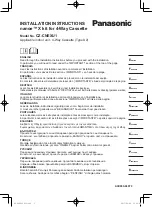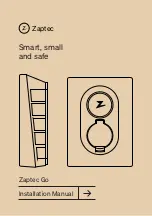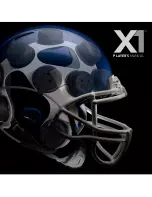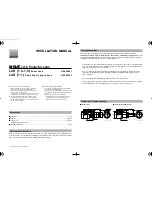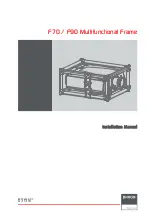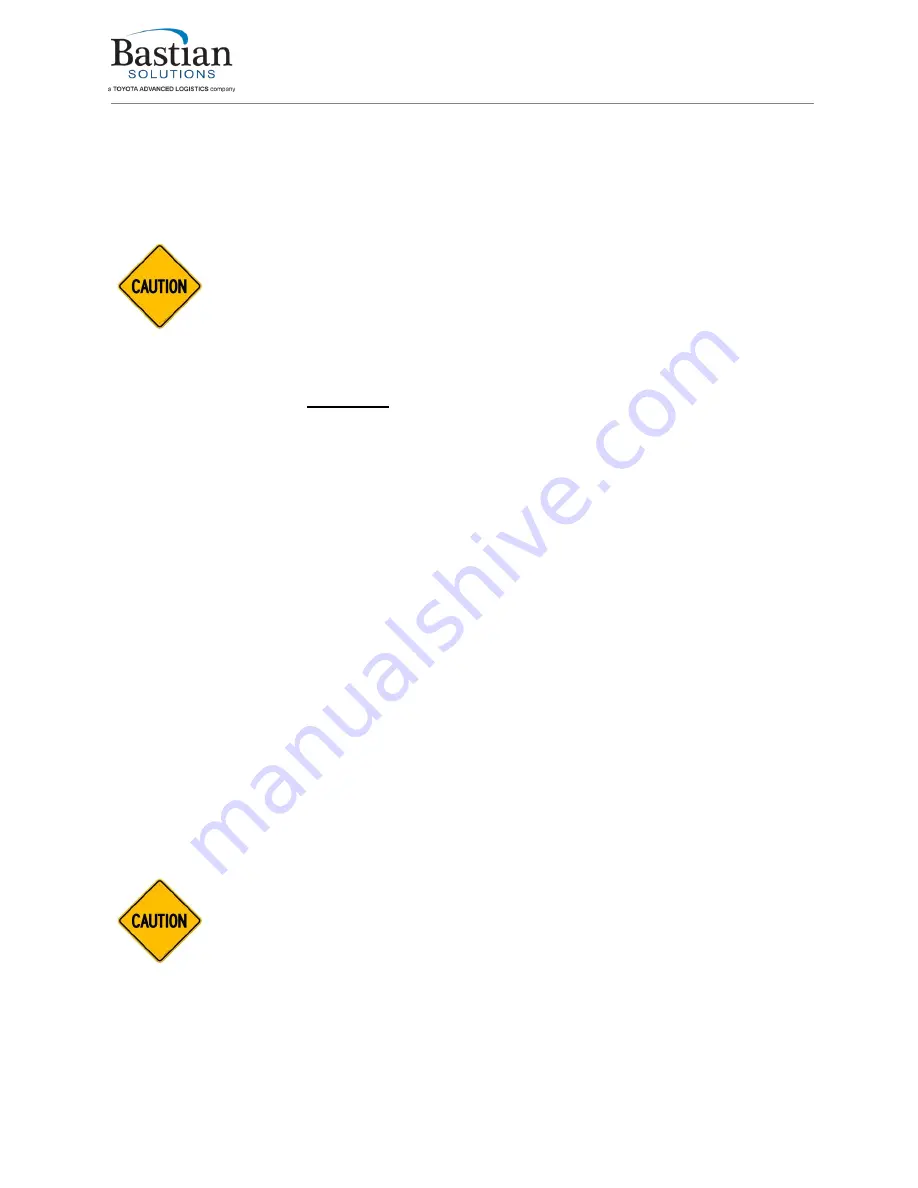
Installation and Maintenance Manual: RLVAC
Published February 2022
50
2. Ensure air pressure is removed from the tensioning cylinder (55) and the belt is slack. It may be
necessary to remove one of the takeup guards and manually extend the tensioning cylinder to
provide extra belt slack. See Figure 30: General Arrangement, Belt Under Roller AC, Pneumatic
Takeup Drive, Sheet 1 of 1 for details.
3. Remove conveying rollers and one pressure module to access the drive pulley from above. See
section 6.8 for details.
4. Remove the bearings (49) on both sides of the drive pulley (44).
Do not hammer or pry on the outer races of the bearings. Damage to the bearings may
result.
5. Remove the XT25 bushings on either side of the pulley shaft. Access to the bushing bolts is
provided once the bearings are removed. Reference the PCI XT bushing installation instruction
sheet for detailed instructions.
6. Repeat step 5 for the replacement pulley, making sure to keep the replacement parts separate
from the parts which are removed from the conveyor.
7. Slide the pulley shaft out from the conveyor, making sure to support the pulley drum.
8. Push the loosened belt to one side and slide the pulley drum out of the drive module. Slide the
replacement pulley drum into the same location, without losing the loop of belting.
9. Slide the replacement pulley shaft into the conveyor to hold the drive pulley drum loosely in place.
10. Verify correct belt routing using the arrows on the side of the drive section. See Figure 15:
Pneumatic Takeup Drive Belt Routing in section 5.5.2 for confirmation.
11. Reassemble and torque the XT bushings on the replacement pulley following the PCI XT bushing
installation instruction sheet, taking care that the pulley drum is centered between the two
sideframes.
12. Reinstall both drive pulley bearings (49). Torque the set screws per ABB Motors MN3016 only
after both bearings are fully installed and their mounting bolts are torqued.
13. Follow steps 8 through 14 of section 6.6.1 to replace the drive motor.
14. See section 5.12.2 for belt tensioning and tracking instructions.
15. Replace any guards or conveying rollers that were removed.
6.6.3 Takeup Pulley Replacement
1. Remove the side guards on both sides of the takeup. See Figure 30: General Arrangement, Belt
Under Roller AC, Pneumatic Takeup Drive, Sheet 1 of 1 for details.
2. Ensure air pressure is removed from the tensioning cylinder (55) and the belt is slack. It may be
necessary to manually extend the tensioning cylinder to provide extra belt slack.
3. Remove the bearings (48) and the shaft retaining hardware from both sides of the takeup pulley
(45). The chain (52) may be left connected. Each side of the takeup carriage may be set aside
once it is removed from the takeup pulley. Do not take the chains off the sprockets (51) or allow
one chain to skip a tooth on the sprocket.
Do not hammer or pry on the outer races of the bearings. Damage to the bearings may
result.
4. Slide the takeup pulley towards the drive motor until it can fit through the circular cutout in the
drive frame, then remove the pulley from the drive.
5. Insert the new takeup pulley in the loop of belt that is left open from the removal of the old takeup
pulley.
6. Verify correct belt routing using the arrows on the side of the drive section. See Figure 15:
Pneumatic Takeup Drive Belt Routing in section 5.5.2 for confirmation.

